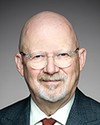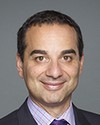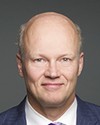Mr. Speaker, I would like to begin by thanking the member for York Centre for sponsoring Bill S-232 to establish Canadian Jewish heritage month.
Preparing for this debate has made me think about what we would be celebrating, how we would be doing that, and that it would mean different things for different people, which is what I find so exciting about having Canadian Jewish heritage month. It would give us an opportunity to explore and learn more about our rich Jewish heritage here in Canada. When I think about Canadian Jewish heritage, I think about our history, food, and some strong Jewish women who have paved the way for us.
On the history, I recently discovered that only a few blocks away from my home are two of the oldest Jewish cemeteries in Toronto. These are two small, fairly nondescript cemeteries we might not normally notice, but I am hoping that having a month like Canadian Jewish heritage month will give us an opportunity to learn more about these hidden spaces. One of the cemeteries is located on Pape Avenue, just south of Gerrard, behind the Matty Eckler Recreation Centre. This was the first Jewish cemetery in all of Toronto. It was established in 1849, before we even had the first synagogue in the city of Toronto. Its administration was taken over by the Holy Blossom Temple, and it has been closed since 1930. However, if members are walking along Pape Avenue behind the Matty Eckler Recreation Centre, they should take a peek, because it a little piece of our history.
The other historical cemetery is on Jones Avenue just south of Strathcona Avenue. As we walk along Jones Avenue, we can see some Hebrew writing on a wall, but otherwise we might not notice it is there. This is the second-oldest Jewish cemetery in the city of Toronto. It was bought as farmland in 1883, and it was consecrated in 1896. It is where the city's first Orthodox Jewish rabbi, Joseph Weinrib, is buried. This cemetery is still in operation but on a very limited basis. In fact, the last burial was in 2008.
There are parts of our history that are also going to take us a moment to challenge the way we see our Canadian history and our path forward. When I say this, I think about the St. Louis, on which more than 900 Jewish refugees fleeing the Second World War were seeking refuge in Canada in 1939. This story is fairly well known. We have talked about it here. The boat was turned away, because the feeling at the time in Canada was that none was too many. This is a dark moment for Canadian history, but I would like to bring us back to my community. There is a beautiful narrative arc to this story.
I recently learned that one of the survivors of the St. Louis made it to Canada and had a family, and members of her family are part of the Danforth Jewish Circle in my community. I see beautiful light in this story, and where we can learn lessons from our history is that the Danforth Jewish Circle has been active in sponsoring a Syrian refugee family. Therefore, we see this wonderful story of our own history of many Jewish people coming here as refugees and now returning that circle in sponsoring people and welcoming them to our country. I had the opportunity to meet the family that was sponsored, and they are flourishing due to their own hard work but also because of the support they are receiving from the community. Therefore, in retelling our history as part of Canadian Jewish heritage month, we also have an opportunity to learn from our lessons from the past and see how we can pave a better future going forward.
As a Canadian Jewish woman, I am proud of some of the strong Jewish women who have come before me and formed part of our heritage. The heritage committee, on which I sit, recently did a study on women and girls in sports, and that was tabled in the House quite recently.
When we look at women and girls in sports, we owe a lot to the leadership of female Jewish athletes. I recently got the updatedBook of Lists,, and in it I was happy to see that Abby Hoffman was included in Lanni Marchant's seven gritty and groundbreaking athletic performances by women. She says that when Abby was nine, she wanted to play in a boys' hockey league, so she cut her hair short and registered as Ab Hoffman. She was known for her speed, skills, and determination that matched her better than those of the boys with whom she played. She went on to compete in four Olympic Games between 1964 and 1976, and medaled at the Pan Am Games.
Abby's efforts helped to open the University of Toronto's Hart House to women after initially being an all-male facility, and that was a big change. She is part of the reason women can now be at Hart House. At the 1976 summer Olympics in Montreal, she was also the first woman to carry the Canadian flag in the Olympic opening ceremonies.
I would like to do a shout-out to take a moment to recognize some strong Canadian Jewish women who have contributed. I would like to talk about another strong Jewish woman, Justice Rosalie Abella of our Supreme Court of Canada. She was born as a refugee in Germany, coming to Canada following the Second World War, and now she serves on our highest court. Her story is inspirational. This year, she was named the Global Jurist of the Year for her defence of human rights. We need to recognize some of the strong Jewish women whom we have in our community, and that will be at the centre of so many of our stories when we are looking at Canadian Jewish heritage month.
It might be because of the hour of this debate and feeling a bit peckish at the moment, but I cannot talk about Jewish heritage without talking about food. Food is at the heart of any culture. One of my favourite Jewish foods, one that has an important part in Canadian Jewish heritage, is bagels. All through university when I studied at McGill, my late-night snack was at St-Viateur Bagel down the street. It was right around the corner from me. To this day, I love Montreal bagels.
Bagels are a Canadian Jewish treat. I tried to track down the history of the Montreal bagel, only to discover that it is shrouded in mystery and controversy. Who knew? The Canadian Encyclopedia says:
The Montréal bagel is one of Canada's most iconic and coveted snacks. Its origins are contested and murky.
Food and controversy: that piques my interest. I am not going to be able to resolve that controversy tonight, but I can let members know a bit about the history.
Some say that bagels were brought to Montreal by Chaim Seligman, who helped to set up St-Viateur Bagel bakery. That was where I bought my bagels during my university years. Others say it was Isadore Shlafman, who was the person who started the Fairmount Bagel bakery, another popular bagel shop, which continues to be managed by the same family. For the record, I also enjoy Fairmount bagels. It is just that they were a little farther from my apartment.
When we look at the history, we see the story of the establishment of the St-Viateur Bagel bakery is not at all murky, and it tells a touching story. The history draws a story of moving from a place of adversity to building a better future in Canada. The shop founder, Myer Lewkowicz, grew up in a shtetl near Krakow, Poland. He was sent to Buchenwald concentration camp in 1942. Heartbreakingly, he apparently told a high school class about his experience at the concentration camp by saying, “At Buchenwald, all I dreamt of was a piece of bread.” After the war, he remained in Germany until 1952, when he was discovered by Jewish Immigrant Aid Services of Canada and moved to Montreal. In Montreal, he got a job at a bagel bakery on Saint-Laurent, and in 1957 he set up the St-Viateur Bagel shop with Mr. Seligman. That is how we have the shop today.
When we celebrate, we celebrate people, we celebrate food, we celebrate moments in our history, and we take our lessons forward. There are so many aspects of Canadian Jewish heritage that we could focus upon once this bill passes to recognize Canadian Jewish heritage month. I touched on a few parts, but the magic to me is that the establishment of this month would allow us to learn so much more. I would like to take a moment to thank the member for York Centre once again for bringing us this opportunity. I look forward to it.






